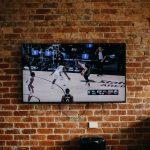Resolution Size Chart And Difference From Screen Size
Display resolution refers to the maximum size a digital image can occupy. Physical screen sizes such as monitor size are represented in measures of inches and common display resolution is displayed as a measure of how many pixels are in the entire image resolution of the whole screen. The actual resolution of display devices depends on the manufacturer but there are some common resolutions (jump straight to the resolution size chart).
We have created an image resolution size chart for the most common resolutions. The modern-day common screen resolution is only meant as a color resolution. Black and white images and single-digit LEDs use a different scheme.
It is also safe to mention at this point that the larger the physical size of any screen, the more the resolution must be to achieve the same sharpness as a smaller display. A 720p tablet will appear sharper than a 720p television. This is because the two of them are using the same total number of pixels and the tablet is smaller therefore the pixels are closer together on the tablet to give a more blended graphic output.
Related: TV Screen Size Chart, Samsung Tab Size Chart, Apple iPad Size Chart, Apple iPhone Size Chart, Amazon Kindle Size by model : What size are kindles?
Summary
- Resolution Size Chart For Standard Definition
- Resolution Size Chart For High Definition
- Resolution Size Chart For Aspect Ratio
- Display Resolution Vs Screen size
- Frequently Asked Questions

Resolution Size Chart For Standard Definition
Classic television range of sizes of pixel dimensions that are now referred to as standard video resolution is all the sizes in which the total pixel count of each image is less than 1 million pixels.
| Resolution | Pixel Dimensions | Consumer Title |
|---|---|---|
| 96p | 128×96 | MMS/3GPP |
| 120p | 160×120 | QQVGA |
| 144p | 256×144 | YouTube Low |
| 240p | 320×240 | XVGA |
| 360p | 640×360 | MP4 |
Resolution Size Chart For High Definition
HD resolution is the term used to describe all aspect ratio resolutions that lead to a picture size in which the image size of the entire screen has a minimum size of 1 million individual pixels. HD displays such as HD televisions, high-resolution LCDs, and high-end smartphones have minimum pixel densities of at least 120 PPI.
Premium smartphones take advantage of their small screen and can have a PPI as high as 600. Some resolutions are non-native. This means they don’t apply to all displays, these ones are not used in the general consumer market. The most popular non-native display is the cinema film format of 2048×1536, popularly known as 2K.
| Resolution | Pixel Dimensions | Consumer Title |
|---|---|---|
| 720p | 1280×720 | HD |
| 1080p | 1920×1080 | Full HD |
| 1440p | 2560×1440 | QuadHD (QHD) |
| 2160p | 3840×2160 | 4K or UltraHD |
| 2540p | 4520×2640 | NA |
| 4000p | 4096×3072 | NA |
| 3160p | 6144×3160 | 6K |
| 4320p | 7680×4320 | 8K |
Resolution Size Chart For Aspect Ratio
The aspect ratio is the proportional relationship between its pixel width and pixel height. For example, 1920×1080 (1080p) is wider than it is tall, remember “first number is width”. The ratio of its width to height is 16 to 9, it has an aspect ratio of 16:9.
| Aspect Ratio | Resolution |
|---|---|
| 4:3 | 360p, 144p |
| 16:9 | HD, Full HD, QHD, Ultra HD |
| 16:10 (8:5) | Full HD+, 2K |
| 1.9:1 | 2028×1080, 4096×2160 |
Display Resolution Vs Screen size
Related: TV Screen Size Chart
The correct perception of display resolution is not a measure of how “sharp” the image is. The term for the fineness of an image is “pixel density”. Pixel density is a count of the number of pixels per inch of the surface area of your screen.
Screen size is measured in inches, screen resolution is measured in pixel count and pixel density is measured in pixels per inch (PPI). We can say that resolution is the total count of the effective pixels in a frame resolution. It is a set of two numbers that tell us the native grid size of device displays by counting the rows and columns of logical pixels.
Resolution is a count of physical pixels. Resolution measures how many pixels a display can show at a time. Pixel density is a measure of how big each pixel is.
A larger screen will need a larger reference resolution to have the same effective resolution as a smaller screen. Only the largest screens such as 8K resolution TVs can have a native output of Quad HD and above. A non-native resolution input is any optical resolution that appears to be more than any native resolution output but is also a lesser resolution than the next value of an input resolution on the HD scale.
Display Resolution Size Chart Vs Screen Size explained (video)
Frequently Asked Questions about resolution size
What is my resolution?
Your physical screen resolution is a digital measurement of the pixel array that forms every image on your screen. It is represented by two numbers that tell us the image’s dimensions in pixels.
The second number says the height in pixels and the first number says the width. The second number always refers to the number of horizontal lines on the display and it is always the smaller number because most displays are in landscape mode.
How do you know your screen resolution?
Well, there is only one way to do that. Check the specs of the product. The manufacturer may have advertised by mentioning the vertical resolution in the basic specifications. If the vertical resolution is a common display resolution, then it will be on our screen resolution size chart above. If the device has a non-native resolution input or output, then you have no choice but to look up the specifications of that particular device.
Which resolution is best for me?
The effective resolution of any screen depends not only on aspect ratio resolutions but also on the minimum size of space that your display has and your viewing distance from the screen. Optimal viewing distance is the gap in which your eye can catch each pixel shape.
Experience will make most people agree that profile pictures look great on small screens like smartphones, but their optical resolution drops when enlarged on standard resolution LCDs. The perception of display resolution is a matter of how close your eyes will be to the screen. If they will be very close, you will need a high resolution, as high as possible. If they are far, then you don’t really need so much resolution.
What is the difference between 1080p and 1080i?
The two of them have identical image pixel dimensions. The difference between them is their incoming picture format. When in landscape mode, the horizontal field of vision is quite important.
Normal television screens such as analog television systems produce pictures using an interlaced scan. They run scan lines over interlaced fields. The screen will paint each horizontal line of pixels per unit distance. The lines that are right beside each other won’t be painted.
All odd lines will first be painted then all the even lines. This is not a specific rule, but most of the time, the odd lines of an interlaced video are always the first to be displayed. A digital video transmission format that displays an interlaced video is represented with the letters “i”. 1080i is simply “interlaced”.
The second type is a progressive scan. Angular resolution in the progressive scan is more suited for landscape orientation. Progressive scan paints the scan lines in a horizontal field one after the other. This format represents the letter “p”. 1080p is simply “progressive”.
What does 1920×1080 resolution mean?
1920×1080 is the resolution referred to as “1080p” and “Full HD”. The picture is 1080 pixels tall and 1920 pixels wide. These pixel dimensions are made of 1080 horizontal lines of pixels and 1920 vertical lines of pixels, making the entire image have 2,073,600 pixels.
What resolution size chart is 2560×1440?
This resolution is better known as “1440p” or “Quad HD”. It is sometimes represented with the letters QHD. There are 1440 horizontal lines of pixels and 2560 vertical lines. This makes each image have a total of 3,686,400 pixels.
Which is better 1920×1080 or 1920×1200?
1920×1200 is a non-native resolution. 1920×1080 is the standard resolution for the standard aspect ratio (16:9). If your screen has one of the rectangular shapes that makes it difficult to use the aspect ratio of 16:9 then the business owners can use the aspect ratio of 16:10. Using 16:10 resolves to become 1920×1200. The resolution that is better for you depends on your display screen size and your viewing distance from the screen.
Is 1920×1200 Full HD?
No, the aspect ratio is different from Full HD and the total pixel count is larger than Full HD. Full HD is 1920×1080. 1920×1200 is simply slightly larger than Full HD and slightly sharper.
Is 1440P equal to 4K?
No, 1440P is “Quad HD” while 4K is “Ultra HD”. 4K is equal to 2160P.
How do I know the aspect ratio of a screen?
Calculate the ratio between the first number (the width) and the second number (the height). For example: Screens that are 1,600 x 900 or 3,200 x 1,800 are in the 16:9 aspect ratio. This is because 1600:900 can be reduced to 16:9 by dividing the two numbers by 100.
What is the normal aspect ratio?
All TVs sold on the consumer market have an aspect ratio of 16:9. Monitors and smartphones can display images in native 16:9 and also 4:3 and 16:10.
Conclusion
A common screen resolution is most likely what you will get if you put in the effort of buying a new display. It is advisable to not just choose a display based on specs written on paper. Visit a store or a friend and use the device in the same manner in which you will most likely use it after purchasing. This is to make sure that the display is good enough for you.
It may not be your new year’s resolution, but it will be a high-definition gesture to us if you share this article and leave a pixel-clear comment.
Picture in this post by Eye Speak on Unsplash
Related to Resolution Size Chart
- Apple Vision Pro Size and Dimensions : how big is it?
- Samsung Galaxy Size Chart : Samsung phone dimensions
- What Size is a 42 Inch TV? 42 TV Dimensions in CM & Inches
- Amazon Kindle Size by Model : What Size are Kindles?
- What size is a 55 inch TV? Dimensions in CM, Inches & Room Size
- 75-inch TV Dimensions. Dimensions in CM, Inches & Room Size
- Computer Monitor Size Chart: Which Size is the Best?
- Apple Watch 8 Size Guide vs Other Apple Watch Series
- iPhone 13 Pro Max Screen Size Chart vs Other iPhone Dimensions
- iPhone 13 Screen Size Chart: Dimensions vs Other iPhone Models
- iPhone XR Size Screen Size Chart: Dimensions vs Other iPhones
- iPhone 13 Pro Screen Size Chart Explained vs Other iPhones
- Resolution Size Chart And Difference From Screen Size
- iPhone 14 Size Chart, Screen Dimensions and Size Comparison
- iPhone 12 Screen Size Chart with Dimensions and Size Comparison
- iPhone 12 Mini Size Chart with Screen Dimensions and Comparison
- iPhone 12 Pro Size and Screen Dimensions Compared with Other iPhones
- iMac 24 Size, Weight and Box Dimensions
- Snapchat Ads Size – Scale Your Business with the Right-Sized Ads
- Screen Protector for iPhone Size, with Tips and Easy to Use Size-Charts





















